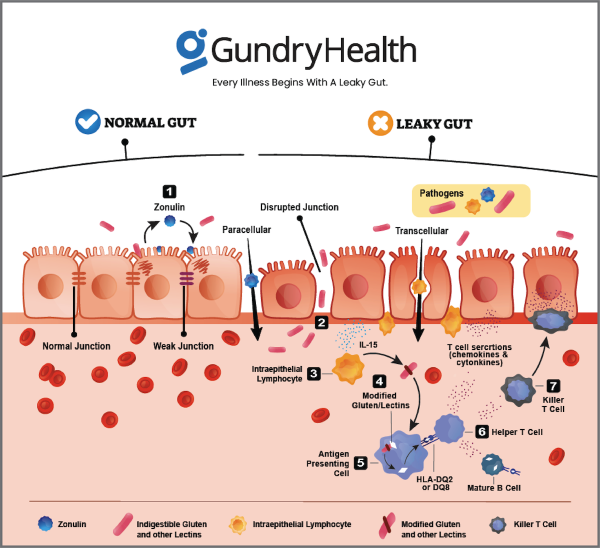A Comprehensive Guide to Susac’s Syndrome and Personalized Treatment Options – Gundry Health
Susac’s Syndrome is a rare autoimmune disorder that affects the very small blood vessels in the brain, retina, and inner ear1. It is characterized by a clinical triad of encephalopathy, branch retinal artery occlusions (BRAO), and hearing loss2. The exact cause of Susac’s Syndrome is unknown, but it is theorized that antibodies are produced against endothelial cells in tiny arteries, which leads to damage and the symptoms related to the illness3.
This article aims to shed light on this condition, its symptoms, diagnosis, treatment options, and how Gundry Health offers a unique approach to managing it.
Understanding Susac’s Syndrome
Susac’s syndrome is an autoimmune disease that primarily affects the brain, retina, and inner ear. The condition is characterized by three main symptoms: encephalopathy (impaired brain function), vision loss, and hearing loss.
Often, patients experience sudden confusion, numbness or weakness in their face, arm, or leg, especially on one side of the body. Some may also have speech difficulties, vision disturbances, and bizarre or paranoid behavior.
Diagnosis of Susac’s Syndrome
Diagnosing Susac’s syndrome can be challenging due to its rarity and similarity to other conditions. The diagnosis typically involves a combination of clinical assessments, imaging studies like MRI, and sometimes, a biopsy of the affected tissue5. The complete triad may not be present at the onset, which makes diagnosis more difficult6. However, since this disorder is treatable, early diagnosis is important6.
Symptoms
Symptoms of Susac’s Syndrome vary from person to person and typically correspond to the area of the body affected. Brain symptoms, such as severe headache, confusion, problems with thinking, slurred speech, and walking difficulties, are the most common first symptoms4. Other symptoms include sensorineural hearing loss, tinnitus, vertigo, gait ataxia, and nausea2. Visual symptoms include partial or complete blockage of the small arteries and capillaries that supply blood to the retina, resulting in decreased blood flow to the retina and impaired vision1.
Traditional Treatment Options
Treatment of Susac’s Syndrome requires immunosuppression6. High-dose corticosteroid therapy is the mainstay, but additional therapies such as intravenous immunoglobulin, mycophenolate mofetil, methotrexate, azathioprine, and plasma exchange may also be necessary789. Unfortunately, there are no data regarding the comparative efficacy of these treatments8. Once symptoms improve, treatments can be gradually tapered off7. Most patients recover from Susac’s Syndrome, though some have permanent disabilities from the disease such as hearing loss7.
Gundry Health’s Approach to Autoimmune Disorders
Gundry Health, founded by Dr. Steven Gundry, offers a unique approach to managing autoimmune disorders like Susac’s syndrome. This platform combines conventional medical treatment with cutting-edge nutritional and therapeutic interventions.
Gundry Health believes in an individualized approach to treatment, recognizing that each patient’s journey with Susac’s syndrome is unique. They focus on the following:
- Personalized Care Plans: Based on individual health profiles, they provide personalized care plans that blend traditional therapies with nutritional guidance.
- Nutritional Interventions: Gundry Health emphasizes the role of diet in managing autoimmune disorders. Their approach includes providing patients with personalized dietary recommendations aimed at reducing inflammation and promoting overall health.
- Therapeutic Interventions: These may include lifestyle modifications, stress management techniques, and physical therapies, depending on the patient’s needs.
Real Life Patient Experiences
In a case report of a 27-year-old woman with Susac’s Syndrome, the patient had a history of headache, visual loss in her right eye, and four-limb paresthesia over a period of 10 months prior to presentation. During this period, the patient had developed behavioral and mood changes such as depression, paranoia, and memory loss. The patient responded well to Prednisone, which followed a monocyclic course10. Another case report describes a fatal case of Susac’s Syndrome, highlighting the importance of ophthalmic examination in confirming the diagnosis11.
Conclusion
Susac’s syndrome is a complex condition that requires a comprehensive understanding and a tailored approach for effective management. Gundry Health’s blend of conventional medical treatment with nutritional and therapeutic interventions offers a promising alternative for patients seeking a more personalized treatment option.
Susac’s Syndrome is a rare autoimmune disorder that affects the very small blood vessels in the brain, retina, and inner ear. Symptoms vary from person to person and typically correspond to the area of the body affected. Early diagnosis is important, and treatment requires immunosuppression. High-dose corticosteroid therapy is the mainstay, but additional therapies such as intravenous immunoglobulin, mycophenolate mofetil, methotrexate, azathioprine, and plasma exchange may also be necessary. Most patients recover from Susac’s Syndrome, though some have permanent disabilities from the disease such as hearing loss.
With early diagnosis and appropriate treatment, individuals with Susac’s syndrome can lead fulfilling lives. It’s crucial for anyone experiencing symptoms to seek medical attention promptly and explore all available treatment options, including the innovative approach offered by Gundry Health.
Get personalized care and recommendations for Susac’s Syndrome from Dr Gundry-Approved program
If you’re looking for more guidance about Susac’s Syndrome than this short list of recommendations, Dr. Gundry’s unique health program is now available to you (without needing an appointment at one of Dr. Gundry’s two, waitlist-only West Coast clinics).
Thanks to the pioneering work of Dr. Gundry and his team at Gundry Health, patient care team trained in Dr. Gundry’s unique holistic methods are now available to help you craft your own personalized Susac’s Syndrome program.
It’s easy to get started.
Simply click the link below to get more information about personalized Susac’s Syndrome treatment plan options, so you can get expert analysis, diagnostic care, and a plan for tackling Susac’s Syndrome, arthritis, or other autoimmune diseases.
Each patient care team member at Gundry Health is Board Certified and trained in Dr. Gundry’s renowned approach to functional medicine and care.
Get your personal lab data and talk to a U.S. licensed doctor. Click Here.







